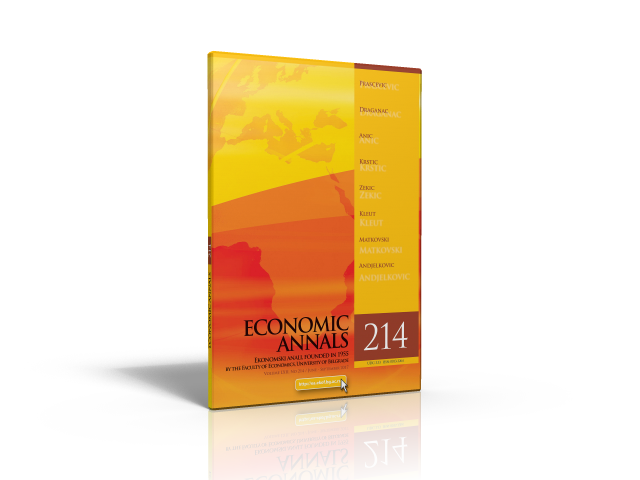ARE THE UNEMPLOYED AND INACTIVE FINANCIALLY TRAPPED? EVIDENCE FROM SERBIA
##plugins.themes.bootstrap3.article.main##
##plugins.themes.bootstrap3.article.sidebar##
Aleksandra Anić
Gorana Krstić
Gorana Krstić
Abstract
The aim of this paper is to explore if the unemployed and inactive but able to work individuals in Serbia are incentivized to work or to live dependent on the safety net. Following OECD methodology, we calculate the net replacement rate, defined as the ratio of net income out of work to net income in work. We use 2014 Survey of Income and Living Conditions microdata to calculate and analyse the net replacement rate. Since wages for the unemployed and inactive are not observed, we estimate them, taking into account selection effects (Bourguignon, Fournier, & Gurgand, 2007). Our results suggest a number of interesting findings. First, neither unemployed nor inactive are financially trapped, since the net replacement rate is 55.5% for the unemployed and 59.1% for the inactive, on average. Second, those receiving monetary social assistance and/or child allowance (the two main cash benefit programmes to help poor families) do have incentives to work. Finally, our analysis of the net replacement rate by different individual and household characteristics indicates that the benefit system in Serbia does not provide a disincentive to work.
##plugins.themes.bootstrap3.article.details##
Keywords
net replacement rate, work incentives, unemployment trap, inactivity trap, Serbia
JEL Classification
C25, J01, J21, J60
Issue
Section
Articles
How to Cite
Anić, A., & Krstić, G. (2017). ARE THE UNEMPLOYED AND INACTIVE FINANCIALLY TRAPPED? EVIDENCE FROM SERBIA. Economic Annals, 62(214), 87-106. https://doi.org/10.2298/EKA1714087A
How to Cite
Anić, A., & Krstić, G. (2017). ARE THE UNEMPLOYED AND INACTIVE FINANCIALLY TRAPPED? EVIDENCE FROM SERBIA. Economic Annals, 62(214), 87-106. https://doi.org/10.2298/EKA1714087A

